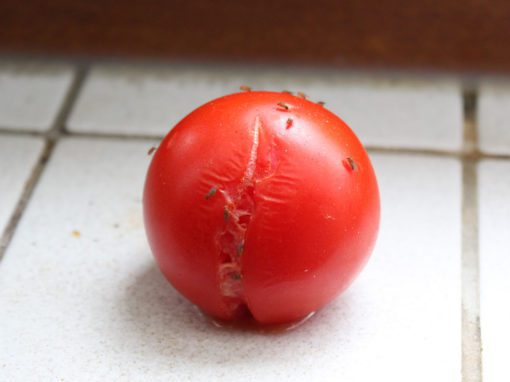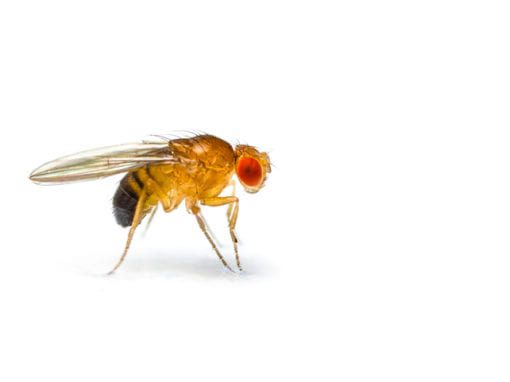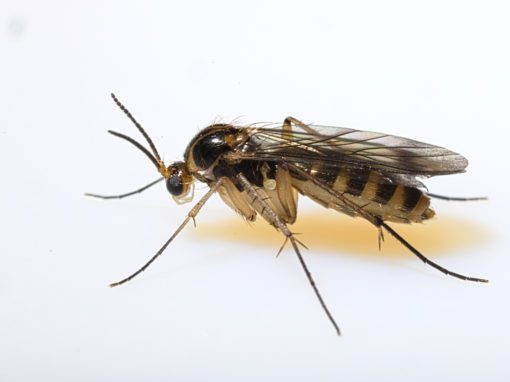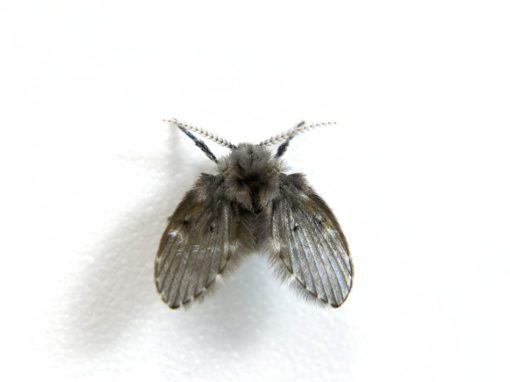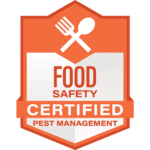In the summertime, when it’s extra sticky and gross, humid and moist, things get ripe pretty fast. During the winter I can leave a bowl full of fruit out on the counter at room temperature and neglect it all I want without a concern for a fruit fly problem. In the sweltering days of August in this old building though? I think not.
I recently had to solve a very ripe two-part mystery in my kitchen.
One: Where were these fruit flies coming from? and Two: Where was that funky smell coming from?
Lo and behold, a sack of potatoes in the very bottom of a box of onions I usually store in the otherwise dark, cool pantry was the culprit.
But wait a minute. Potatoes aren’t fruit.
So where do fruit flies come from?
Well first of all, let’s not immediately assume that any ol’ small fly in your kitchen is for sure 100% a fruit fly until we make a scientific observation about its behavior and habits. Proper species identification is crucial to understanding the reason behind an unexpected invasion of the insect kind. Inspecting and observing allows for us to understand what it’s going to take to push that pest pressure back into nature where it can do whatever it does out there and NOT inside our buildings.
You don’t have to go buy a microscope kit or scroll through google results for countless DIY suggestions that may be a waste of your time. This is what experts like us are here for. Just call the Rose pro you know and we’ll help.
Fruit Fly
Fruit flies are attracted to freshly decaying, moist, organic matter like fruits and vegetables. In nature, that makes sense. We need decomposers otherwise the world would smell like hot garbage. So thanks, fruit flies. But also EW get out of my house. Fruit flies come from outside. They get in through teeny holes in screens. They love trash containers and recycling bins with sticky slop dripped on it. Fruit flies will go to town on a damp mop head in a restaurant kitchen, make babies in your garbage disposals and other icky, gunky places. Fruit flies live only for a few days and will breed rapidly if conditions are ideal. Hot garbage summer is like fly paradise. The key to keep in mind is this:
To eliminate a fly problem, you must find and eliminate the source of their breeding sites.
Some ideal fruit fly breeding sites will be obvious, like ripened fruit. Some, such as a forgotten sack of potatoes (WOOPS) or food kicked under the stove, may be easily overlooked. Have you ever experienced how disgusting a leaky black sludgy forgotten sack of potatoes is? Seriously THE WORST. Once I got that out of there, I super mega ultra cleaned that pantry floor and all sides of the shelves and bottoms of jars and cans. I got so many cat toys out from underneath the fridge and the stove. Got in all the nooks and crannies. I put all of my produce in the refrigerator and no more fruit flies. VICTORY!
Fungus Gnats
Fungus gnats are shaped differently than fruit flies. And they’re not so much into fruit like their red-eyed counterparts. Fungus gnats are attracted to the soil in potted plants. Overwatering plants is the biggest reason you’d have these little gnats in your house. Overwatering produces molds which creates an ideal breeding ground for gnats.
How to get rid of fungus gnats
Something that significantly helps get rid of fungus gnats in potted plants is adding one inch of sand to the top of the soil. As the freshly hatched gnats emerge from the soil, the roughness of the sand will cut their chitin (protective waxy coating on their body) and they will dry out and die. Be good plant parents and look up how often you should be watering the specific species of plants you have. Remember, it’s all about balance!
Drain Flies
Drain flies are also called bathroom flies, moth flies, and problem much worse over time. They look fuzzy like maybe this isn’t a bad bug. But it’s not a good thing if you have these. Having a drain fly population issue means you have something going on with your drains and you need to get on that ASAP. These will breed in the gunk that builds up in your floor drains, just like fruit flies do with kitchen drains!
You gotta get rid of the gunk. Sanitation is key. That’s solving the problem at the source. Identify the source. Eliminate where they’re breeding. That’s how the pros do it.
Small Flies in Food Establishments
Controlling small flies in food industry businesses is serious business. Our experts have special certifications in food safety to make sure the environment is healthy for employees, patrons and even man’s best friend in certain scenarios. Different flies are all attracted to different things. Not all flies can be handled the same way. They are not just a nuisance – they are vectors capable of spreading bacteria and other things.
Food Safety Certification
There have been some important pest management lessons learned in the food industry since the 1800s. The last place anyone ever wants to see a pest is while they’re eating. There are now food safety regulations, standards and audits in establishments like food manufacturing plants, food storage warehouses, grocery stores, restaurants and bars that maintain sanitary conditions for patrons to consume food safely. Passing pest control audits is crucial to making sure the general public doesn’t get sick when consuming food from grocery stores or restaurants.
AIB International, https://www.aibinternational.com/certification/gfsi/, is one agency that conducts audits of food processing establishments to protect the food industry, helping to ensure that food plants are maintaining a safe and pest-free environment.
An IPM program with a pest management professional is paramount to passing the pest control category of an audit. Rose prides itself on being the number one choice for IPM food industry partnerships. Our experts have a special certification in Food Safety to add to our other credentials. Plus we’ve served the food industry longer than any other company in Chicagoland.
To help keep small flies away from your produce, plants and any other organic material in homes and kitchens, call for help first at 1-800-GOT-PESTS? and keep these things in mind:
-
- To eliminate, experts must first find the source
- An expert can help determine why they’re there and what they’re after, and properly identify the species
- Eliminating a pest problem is not just one person’s job. It is the responsibility of everyone involved – residents, employees and your IPM expert to maintain a healthy, sanitary environment for everyone

